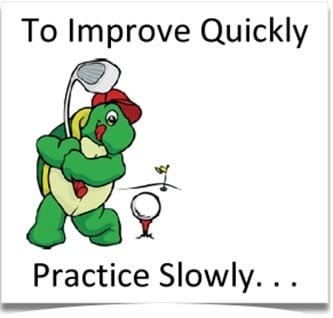Under Par Safety

The fact is we tend to focus our attention on things that are either urgent or enjoyable. Therefore, to improve health and safety at work or at home, we need to stop trying to change behaviours or intentions and concentrate on strategies that activate good outcomes that already exist.
Inadvertence and laziness reflect the way our brains have evolved over millions of years but the problem is that these instincts and inclinations now operate in an ever changing and challenging environment. And, because they were honed in the past, they make health and safety a whole new proposition now and more so in the future!
Our brains account for approximately two percent of our body weight, yet consume about twenty percent of our blood oxygen, twenty five percent of our blood sugar and because brains have no way of storing energy, most logic often goes out of the window.
To conserve energy, our brains rely on heuristics to get things done efficiently and this includes health and safety. There are no free rides as short cuts learnt from the past can easily lead us astray.
Most of the time our conscious minds are on auto-pilot and don’t have a clue on how things get done or why? Our brains operate on only a small percentage of their capacity, so the on the spot completion of surveys, risk assessment ratings and other safety documentation should be interpreted very, very carefully!
In the realm of health and safety, inadvertence and laziness frequently cause overt behaviours to become unhooked from our best intentions and that’s why accidents often occur.
We push losses, discomfort, and costs into the future, by trying to sustain lower injury rates cumulatively over time. However, all our brains really want is short term pay offs, a pat on the back or a simple thank you. We are in fact the under par golfers focusing on negative scores rather than trying to promote positive outcomes.
We use hare brains to subjectively guess ‘on the spot’ risk factors and create hazard registers and on-site documentation without firstly assessing the ever changing environment it takes place in. However, what we should be doing is regularly stopping and taking a step back to seek out new issues that have occurred since our last observations.
Considering that our brains have a limited short term memory, wouldn’t it be far more efficient to move the job of undertaking one safety briefing at the start of a day and spread this time out throughout, like after a break when our sugar levels are higher and our brains our more alert? And, what about completing a five minute debrief at the close of play to learn what near misses occurred, putting in place improvements for tomorrow?
We appoint safety reps to monitor and look after health and safety concerns, but by doing so, push ownership and accountability away from the majority. However, what we should be promoting is using rotating safety advocates where everyone gets the job on a weekly basis.
We seek information from outside sources which appear to be the panacea for all cures, when in fact it is polarising us from a simple truth. The truth is that the answer is hidden inside all of us, waiting to get out. We just need to encourage people to speak up without the fear of reprisal and incrimination.
We write everything down on reams and reams of paper, when our brains see in visual images, so why aren’t we converting all our documents to a series of pictures?
Safety professionals all seek to lock in good intentions, so why do we mostly list down the non-conformances on inspection sheets, when likes on a safety Facebook site would have far more positive outcomes?
We find it far harder to opt out of a group such as Linked In, so why not commit everyone to a safety campaign and let people complete a long winded form to unsubscribe?
The truth is, people often try and change a person’s behaviour instead of focusing on the good points they already have. Everyone has differences and no one wants to get hurt, so the objective should perhaps be to listen to each other, accept our differences, and agree to disagree, committing to a common goal.
What we perhaps need is a common belief that health and safety is not just about filling in the paperwork, but a self-fulfilling prophecy where everyone goes home safer and healthier every day? Moving from the conventional, we need to adopt strategies that work and step out of our comfort zones to find a better world for safety. “All meaningful and lasting change starts first on the inside and works its way out”- Lou Tice



Do you have any thoughts? Please share them below